Key Takeaways
- Know your 3D printing: Learn the basics of 3D printing technology, software, and materials.
- Create a business plan: Define your niche, target market, budget, revenue goals, and marketing strategy.
- Choose your 3D printer and supplies: Pick the best 3D printer for your needs, based on the type, quality, and cost of printing you want to offer.
- Sell your products or services: Decide whether you want to sell 3D printed items, 3D designs, 3D printing on demand, or 3D printing repair and maintenance. Find the best platform or channel to reach your customers.
In just a few short years, 3D printing has gone from “what’s that?” to “how can I get in on this?”
Why? Here are some key stats:
- The 3D printing market is predicted to grow 30% per year to 2026.
- There are over 422,000 working 3D printers in the USA.
- The USA, UK, France, Germany & China are all heavily adopting 3D printing.
Continuing to explode in popularity for both hobbyists and industrial uses, budding entrepreneurs are looking for opportunities to start a 3D printing business. But what opportunities are there?
Honestly, there are so many industries being shaken up by 3D printing — medical, hearing aids, dental, metal part production, spacecraft, even food — that listing every potential use would take too long.
Some have already taken areas of 3D printing and made themselves synonymous with the sector. Wiivv and 3D printed custom sandals, Relativity Space and 3D printed rockets, and Sonova and 3D printed hearing aids. What will your 3D printing business be known for?
This article focuses on how to start a 3D printing business, which 3D printing businesses you could start, and what you need to be able to start and be successful in the 3D printing industry.
How to start a 3D printing business
Naturally, to start a 3D printing business you need to know everything there is to know about 3D printing. You’ll need to know your 3D printer — and the technology that powers it — in and out.
Write your 3D printing business plan
Now you need to create a business plan. Though you feel you already know exactly what you need to do, it’s always best to get your thoughts down in writing, as well as any predictions around revenues, sales, and the amount you’re prepared to invest.
When writing this, think of what you will need to spend money on: potentially renting a location, buying new equipment, hiring or training people — and do you have any guaranteed income you can factor in, or are you starting from zero?

It’s very likely your 3D printing business plan will change dramatically as your business adapts and changes — and that’s fine! — but a business plan will get your future and present ideas down on paper. If you’re planning on lending money from a bank or other institution, a business plan is crucial.
Buying your equipment
If you haven’t chosen which 3D printer (or 3D printers if you’re planning on multiple), you’ll need to choose carefully based on what you plan to print, or what services you plan on offering. Prototypes are often made using SLS 3D printers, as well as MJF, PolyJet, FDM, and more.
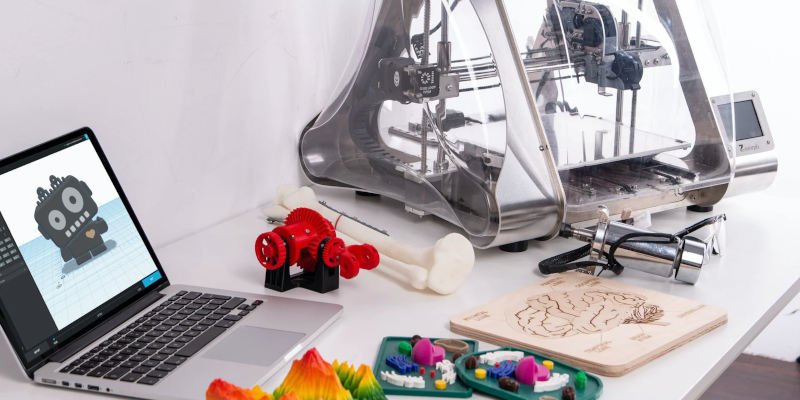
For deciding which to buy, you can check out our guide to every type of 3D printer.
If you know what type of 3D printer you’re planning on using, but aren’t sure on which printer, you can check out our buyer’s guides:
- Our buyer’s guide for the best FDM 3D printers
- Buyer’s guide for the best resin 3D printers
- The best SLS 3D printers
- Our metal 3D printer buyer’s guide
- The best 3D printers for small businesses
3D printers don’t run themselves, so you’ll need to make sure you have the right software, including a 3D slicer such as Cura, and if you’re designing your own models, a 3D modeling software tool. If you’re managing multiple 3D printers, you may want to invest in software to manage them more easily.
For FDM 3D printing you’ll need a steady supply of filament in every material and color range you plan to offer. For more industrial printing you may want to offer Polycarbonate, HIPS, PEEK, Nylon and ASA, but for more standard jobs you may just need PETG, ABS and PLA. The same goes for resins for resin 3D printing for any planned uses, including castable for jewelry molds, and any powders for SLS.
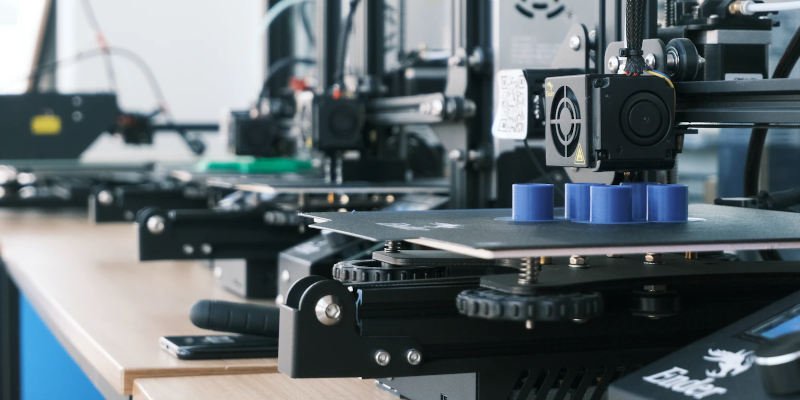
Running costs & marketing costs
As well as this, you’ll need to factor in costs for replacing any parts of your 3D printer that wear out, such as nozzles, resin vats and so on. Electricity isn’t free, but shouldn’t be a major cost.
If you’re planning on launching your own website or webstore, you’ll need to decide how you’ll accept payments, which cart software to use such as Shopify, or Woocommerce on WordPress, and which hosting provider to use.
For marketing, you can opt for social media ads across Facebook, Instagram, or PPC ads on Google for a quick buzz. You can also try to capture people’s attention through generally interesting social media content, such as showing your factory in action, some of the cool things you’ve 3D printed, or vlogging yourself at work. For industrial B2B clients, LinkedIn and direct outreach may be better options.
Where to sell your products
If you’re planning to sell your models on existing platforms like Etsy, Amazon or eBay, you’ll need to decide your plans for those. Or, you may decide to niche down and sell on specialized 3D model platforms. If you’re planning on acting as a service, signing up to Treatstock or Makexyz can save you marketing time and pair you directly with clients.
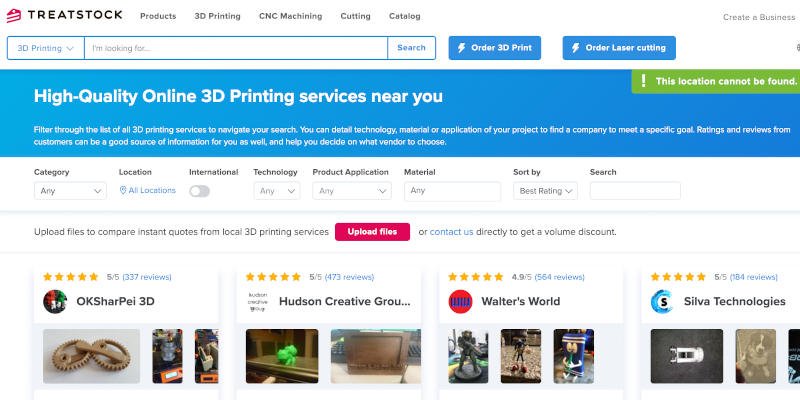
3D Printing Business Ideas: Which 3D printing business should I start?
A true visionary may want to create an entirely new category, like 3D printed rockets, pizza or hearing aids. Nevertheless, here are some tried and tested existing 3D printing business models:
Printing on demand

Do you already own a 3D printer? This is the easiest way to make money from 3D printing.
The business model is simple: you offer to print someone else’s 3D file. The only problem with this 3D printing business plan is that it’s already getting quite competitive, and your service is easily seen as a commodity. Fortunately, we’ve listed some tips for making it in printing on demand.
How?
Sign up on one of the major 3D printing service marketplaces, or sell your service to individual companies outside of a marketplace.
- Establish yourself in a niche market – B2C
Instead of trying to please everyone, you need to find a tribe of loyal customers who see you as their trusted vendor. To find your ideal niche, do some market research by Googling your market, checking sites like Quora and Reddit, and reading blog posts.
Start on a marketplace and then expand beyond it when you have some experience and know which customers you want to attract.
Many creatives, nerds and designers just want their design, such as favorite D&D model or character, in front of them, right now — and they don’t want to buy an entire 3D printer just to print it. Instead, they’ll find someone to do the odd job for them here and there.
Starting a 3D printing business printing consumer models requires less start-up investment, less expensive filaments or resins, and perhaps slightly lower accuracy and precision requirements. More affordable desktop 3D printers will work here, so you could potentially get started as a 3D printing business for just a few hundred dollars with an Ender 3 or Prusa 3D printer.
That isn’t to say there aren’t jobs for individuals that require more industrial 3D printers. Classic car fans looking to get a car part 3D printed will require perfect accuracy and a tough material used, with the crisp surface finish only accessible on higher end machines. But for most consumer jobs, less professional 3D printers should suffice.
There are even marketplaces for local 3D printer service businesses that’ll help you find customers. Treatstock, for example, puts you in contact instantly with thousands of local 3D printer businesses to have your parts printed for you in a variety of different materials.
By becoming a vendor, you potentially skip the expensive marketing costs associated with drumming up business at the beginning of your 3D printing business journey. There are other similar sites to Treatstock like makexyz, but 3D Hubs no longer allow individuals to sign up and offer their printing services.
- Offer your service to B2B customers
Alternatively, you can offer your services directly to B2B customers. Typically, these customers tend to have deeper pockets, a more consistent need for 3D printing services, and they tend to place larger orders.
Start on a marketplace and as you grow, transition to your own brand or site. A successful business that uses this business model is Stratasys, a company that’s active in the engineering, manufacturing, production, and prototyping industries.
Again you’ll want to establish a niche, I see far too many home-based 3D printing businesses try to appeal to everyone doing everything just to make money 3D printing. To really get penetration in the market in a sea of ‘me too’ businesses and franchises -you’ve got to target, accurately.
In B2B — business to business — 3D printing businesses make prototypes and other parts for companies that want to test them. This could be for shape and aesthetics, or functional testing based on how it holds up in certain situations.
Common client needs include architectural and interior design models (a huge advantage if you can print multiple colors, such as by using a Palette), sunglasses and other fashion prototypes, engineering prototypes, resin, ceramic or metal prototypes for various industries, and medical parts, including orthotics, prosthetics and medical implants.
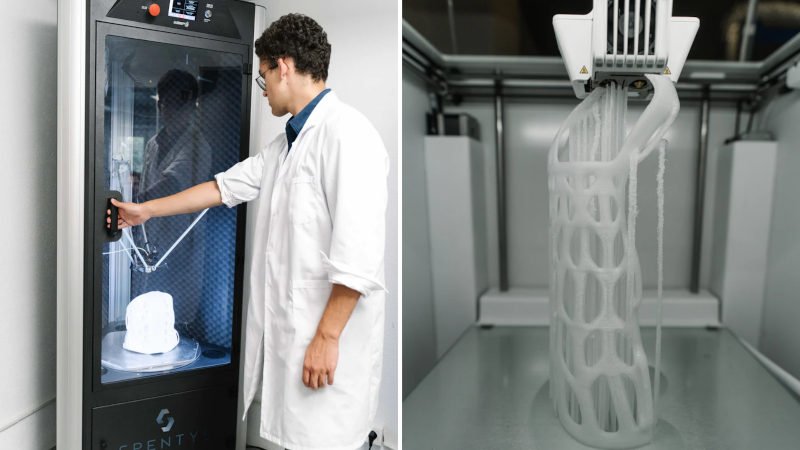
Your ability to run this kind of 3D printing business really depends on the 3D printers you have. With massively growing demand for metal 3D printing — predicted to grow to a $11 billion industry by 2024 — metal additive manufacturing for automotive, space, medical and other uses is a great area to launch.
However, metal 3D printers cost hundreds of thousands of dollars in most cases, so this is not a venture for anyone looking to get in cheap and make some beer money.
Standard affordable 3D printers may not offer the level of precision companies expect when they hire your 3D printing business to print parts and prototypes for them. And many companies may be looking for more expensive types of 3D printing for their parts, such as SLS 3D printers or even PolyJet.
Overall, if you’re planning on starting a B2B 3D printing business acting as a 3D printing services for industrial clients, you’ll probably need a large investment to start with. For marketing, social media and more hobbyist forms of marketing won’t work as well, so you’ll need to either harness PPC ads or grow your network within the industry to find contacts looking to get manufacturing done. But, with this big risk comes the potential for big reward.
Open up your own 3D printing e-commerce store

[Source: AudioQuest]
3D printing is already disrupting the manufacturing industry. That’s why now is the time to set up an e-commerce shop where you sell products that you design and print. 3D printing makes the whole process flexible and cheap. If you’re wanting to know how to make money with a 3D printer, this is one of our favorite 3D printing startup ideas.
How?
Before actually going all-in starting a 3d printer business, you could validate your idea by using crowdfunding sites like Kickstarter and Indiegogo. You can sell your products by building a shop on Shopify and on Amazon, NotOnTheHighStreet.com and Etsy.
- Jewelry, home furnishing, decorations and fashion
The design industry is the perfect industry if you want to open an e-commerce shop. There are lots of options here; jewelry, home furnishing, decorations and fashion. If you want to start small, Etsy is the perfect platform, because its customers crave individualized design. NomaniFOLD sells 3D printed jewelry and is a pioneer in this industry.
- Monthly subscription box
Monthly subscription boxes are insanely popular. Some of them are something of a trend, but others are a convenient way for people to get products delivered to them. But what if you could use this idea to 3D print monthly items that people need and want as a recurring service? For example, deliver toys or pet or baby products on a monthly basis.
- Events
The event industry is massive. There’s everything from weddings, birthdays, graduation parties to company events and conferences. Tap into this market by printing event decorations and other products.
- Other products
With the ideas above, we’re just scratching the surface. There are so many 3D printing business opportunities you can explore!
Customized products

[Source: Open Bionics]
3D printing is changing the way we do business. No wonder; one of the main advantages of 3D printing is that it enables us to mass-customize products. Why not start a shop that’s all about customization? The possibilities for making money with 3D printing business opportunities are endless and this is an area with significant growth potential.
How?
Use Kickstarter, Indiegogo, Etsy, Amazon, Ebay and Shopify to sell items.
You’ll need to price your models based on the amount of filament or resin they use, as well as the time value of your 3D printer’s time. In addition, since you’ve created real tangible models, posting them to your customers will cost money, too. This can vary wildly depending on whether your customer is in your city, or if they’re half way across the globe.
It’s safest to use your own files, as many models from free STL file sites may not authorize you to commercialize them. If you want to add even more value, you could even paint your models, making them stand out and letting you charge higher prices.
You’ll need to think about marketing for this type of 3D printing business. People are unlikely to just find your 3D printing shop unless you’re savvy about getting your name out there: either on social media, or by paid ads such as PPC on Google or Facebook ads. You’ll need to continually optimize any paid ads to make sure you’re selling enough products to make the ads profitable, and keep a beady eye on the data.
If successful however, it’s one of the most rewarding and independent ways to make it as a 3D printing business.
- Customized products
There are no limitations here… mobile cases and covers, special parts that enable you to use items in different ways (e.g. toys), jewelry and so forth. For example, check out Lantos Technologies, a company that prints customized in-ear products.
These 3D printed toys and similar models are always popular, and there will always be a demand for 3D character prints of peoples’ favorite video game or movie characters, musicians, actors and more. Cosplayers are always looking for new elements to use, too.
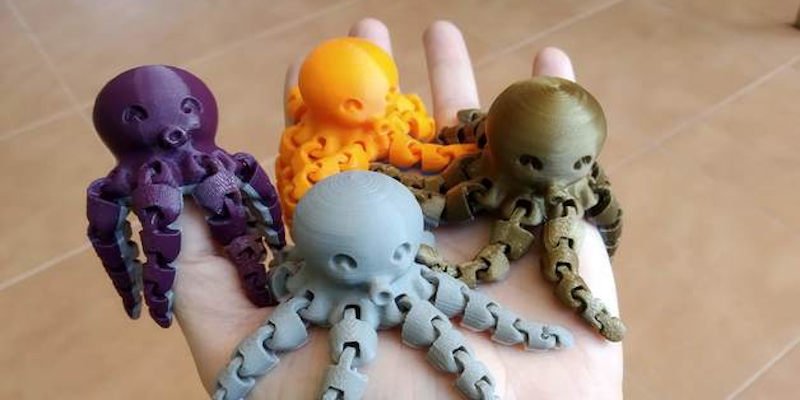
If you’re a good 3D designer — and if you want to learn, check out our ranking of the best free 3D modeling software tools for beginners — you can design your own creations harnessing your boundless creativity and signature style, or just create 3D models based on real people or things. You can then either sell these models and send them fully printed, or sell the STL file and let them print their own.
- Customized collectibles and figures
Fans LOVE customized collectibles and figures of their favorite athletes, artists and gamer avatars. Just make sure to check all licenses if you want to use this for your business. On the other hand, there’s a market for customized figures of people themselves, e.g. a figure of someone posing in his or her sports gear or their own gamer avatar.
For example, CoKreeate is a company that has successfully established itself in this market. Want to learn more about how to set up your own shop? Here’s a story that might inspire you.
Selling small items like this could be much easier if you’re wanting to set up a home-based 3D printing business. Lower storage and shipping costs for your home-factory business.
Read more: the best 3D printers for D&D miniatures
- Prosthetics
Prosthetics are expensive and difficult to manufacture. 3D printing is solving several problems in this industry. It makes prosthetics better, more customized and more affordable. Additionally, 3D printing is making it easier to manufacture wheelchairs and other support tools. Some companies that are producing prosthetics and support tools are e-Nable and Open Bionics.
Read more: our feature story on 3D printed prosthetics
- Customized clothes
Typically, clothes are a mass market product. When you walk down the street, you’ll probably meet someone wearing the same item from the same chain. But thanks to 3D printing, it doesn’t have to be this way. 3D printing makes it easy to customize clothing. For example, a popular item that could be 3D printed and mass-customized are clog like foam shoes. One of the advantages of these shoes is that the foam forms itself to your feet. 3D printing enables you to improve this product.
Want to check out some successful companies in this space? Kinematics dress and Continuum Fashion are some of the companies that are already selling customized clothes and fashion related accessories.
Read more: how 3D printed clothing is changing the world
Read more: 3D printed fashion: the latest trend
- Customized sports and hobby products
People spend a lot of money on sports and hobbies, and this is the perfect market for customized items. For example, you could sell customized tennis racket covers to teams or customized fishing and golfing gear.
Read more: our feature story on 3D printed shoes and sneakers
- Customized gifts
The best gifts are personal. The problem is that most customized gifts are expensive because they cost so much to manufacture. That’s why 3D printed customized gifts are the best choice; 3D printed customized gifts are affordable and flexible to print.
Read more: 3D printed gifts you can download and print today
- 3D printed photographs
People love storing memories of their loved ones. A great idea for a 3D printing business is to create 3D printed family photographs. Many would love the possibility to store a model of their child, grandparent, pet or even a model of their house.
- Customized baby products
Naturally, most parents want the best for their babies and babies need different tools that fit them. By starting a business that customizes baby products, you tap into this lucrative market. Some of the companies that have noticed this are Spuni, a company that prints spoons, and Technologia Humana 3D, a company that prints 3D models of fetuses.
- Customized B2B products
Not all customized products are in the B2C space. Businesses want to stand out from their competition. You could 3D print customized furniture, signature decoration or other products and sell them to companies.
If you’ve got an eye for designs that’ll sell well online, such as miniatures, tabletop models and D&D-esque designs, this might be the route for you.
Become a 3D printer reseller and expert
Most cheap 3D printers are bought from Amazon. They come with instructions to get you going, and normally have some form of tech support if you run into serious problems.
However, with more complex professional and industrial 3D printers, installation, training and ongoing support may be required.
Resellers sell printers from major 3D printer manufacturers to domestic or local customers, and can provide all the required support and installation locally so the manufacturer doesn’t need to be involved.

To be a reseller, you’ll need to be an expert on every 3D printer made by the brand you’d be reselling, and may need to purchase one at full price first to fully understand it before becoming licensed and gaining access to wholesale rates.
To find customers you’ll need a full understanding of the uses and applications of the particular 3D printers you sell, as well as likely buyer personas. The more industrial and expensive the 3D printers you sell, the smaller your potential client base will likely be.
Another variant of this is focusing on education and 3D printing in schools. Experts on 3D printing may be required to assist with either informing schools to install 3D printers, creating and teaching, or selling to educational establishments. However, check the regulatory rules for your country first.
Design 3D printing files

[Source: History.com]
Love design? Then designing 3D files and selling those designs might be one of the better 3d printing business ideas you’re looking for.
The setup is simple: create and sell designs that your customers can print with their own 3D printers.
How?
Sell your designs on 3D file marketplaces like MyMiniFactory, CG Trader, Shapeways or i.Materialise or create your own online store with Shopify or WordPress (via Woocommerce).
- Create designs for a niche market
Become the go-to person in a niche and sell designs on marketplaces. For example, you could provide designs in the home furnishing niche that companies can buy and use to sell their own prints.
- Create prototypes for companies
Another idea is to create prototype designs and sell them to companies. You’re not printing the designs, which means that you can scale faster.
It’s important to start in a specific niche. For example, say a medical company needs 3D prototypes. If you’re a 3D printing company specializing in medical prototype designs, it’s much more likely that you’ll land them as a client than if you produce generic designs.
- Create designs for museums, architects and interior designers
Typically, museums, architects, and interior designers need a lot of prototypes and other models. For example, History.com uses 3D printed Viking models in its Vikings project and architects need building models.
- Set up your own online store
If you don’t want to sell your designs on marketplaces, you can open a store with a service like Shopify. Sell designs that people can buy right away to use for their own businesses.
Full-Service 3D Design and 3D Printing Agency

Want to take it a step further and set up a shop that takes care of the entire process? With this business plan, your customers come in and talk about what they want you to print. Then, you design the product and print it.
Because the whole process can be quite expensive, you probably scale faster if you target B2B customers or those looking to get started with a new prototype.
How?
- Create prototypes for companies
Companies need prototypes, and they can be very expensive. That’s why 3D printed prototypes are such a great alternative; they’re easier to produce, and they’re cheaper.
2. Design and print products for e-commerce stores
E-commerce companies need to find reliable factories overseas because it’s too expensive to manufacture products locally. As the factory is far away from where the company is based, there might be a range of problems; long production times, varying factory standards and long and costly delivery times.
Many times, e-commerce companies have to source more stock than they need to avoid running out of products. With your services, you can offer a flexible and affordable solution to these problems. By designing and printing products for e-commerce shops, you tap into a major pain point in the industry.
It’s important (and with any of the other business ideas listed here) that you don’t just see this as a way to profit from 3D printing. When starting a business like this, you want to make sure you’re really passionate about the quality or products and the service levels you want to deliver. Otherwise, it will show.
Think about what types of aspects matter most to the types of companies that would want your services and tailor your business plan to address these concerns. Creating small batch production items for an e-commerce company will require a slightly different service than perhaps just creating initial one-off prototypes for new startups.
- Create promotional goods
You know, promotional goods can be really powerful for a company’s marketing strategy. The only problem is that it’s expensive and difficult to find creative promotional goods if the company wants to go with something else than t-shirts. 3D printing doesn’t have the same restrictions, and that’s why your 3D printing service can solve this problem. Besides targeting the end user (companies), you might want to offer your services to ad agencies.
- Repair and maintenance
As the 3D printing industry grows, there will be a growing demand for reliable repair and maintenance services. Set up your own repair and maintenance shop and repair and maintain 3D printers and prints.
Conclusion
Overall, with massive industry growth — especially on the industrial side — additive manufacturing is very attractive area to be in. If you’ve got the risk-taking chops, business acumen and love and knowledge for 3D printing, and are willing to put the work in, who knows, perhaps you could be the next 3D printing billionaire!















